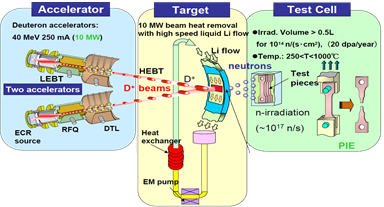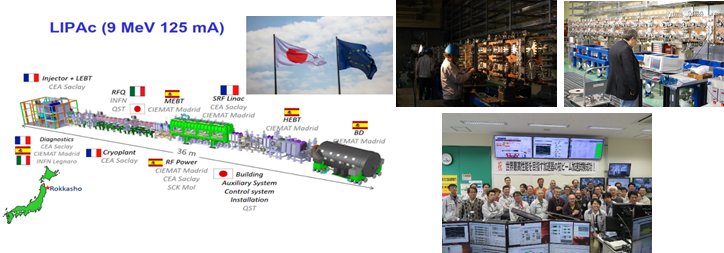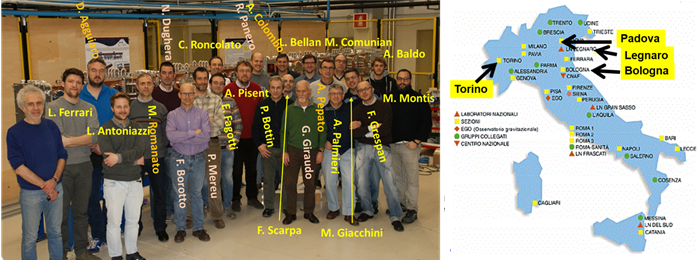Responsible: A. Pisent
The materials constituting the new fusion reactors will undergo an extremely intense neutron flux with the characteristic spectrum of nuclear fusion. In order to qualify these materials, in view of the production of electric energy, it is necessary to build a very intense accelerator-based neutron source, IFMIF (International Fusion Material Facility). This realization is necessary in parallel to ITER tests.

The IFMIF/EVEDA project (approved in 2007, Broader approach complementary to ITER) includes an accelerator demonstrator (LIPAc) 1.2 MW of beam power, as well as an advanced IFMIF design. The demonstrator is composed by two parts:
- one of the circuit and the lithium target (Lithium Loop) e
- one of the Test Facility as well as an advanced IFMIF design.
LIPAC is at an advanced stage of construction in Rokkasho (Japan) with the contribution of INFN, while the other tasks have been successfully completed.

INFN activities in LIPAc:
- The INFN, with the National Laboratories of Legnaro and with the sections of Turin, Bologna and Padua, has a leading role in IFMIF-EVEDA having the responsibility for the construction of the LIPAC RFQ, perhaps the most difficult to achieve as the intensity parameters of the beam (125 mA of deuterons with 100% d uty cycle) exceed those of any other RFQ made so far.
- Other tasks in which INFN is involved from the beginning are the installation and commissioning of LIPAC and the design of IFMIF.
INFN was then also asked to contribute to the project in other activities such as beam dynamics, diagnostics, radiofrequency and the source of deuterons.

Results achieved:
- The RFQ has been designed, built, installed and put into operation, and has so far achieved all the design parameters.
- The achievement of the record intensity of 125 mA, with the output expected emittance value and with the transmission higher than 90% are of particular importance for the scientific community
- The results have so far been obtained in pulsed mode, demonstrating the goodness of the design of the RFQ and its implementation. The ongoing completion of the power radiofrequency system and the beam dump of over 1 MW (under the responsibility of the Spanish agency CIEMAT and Fusion for Energy) will make it possible to take the last step and demonstrate the operation in CW mode necessary to IFMIF.

The future: Within the approved BA2 the RFQ beam at high duty cycle will be accelerated to the beam dump (beam line installed and tested)